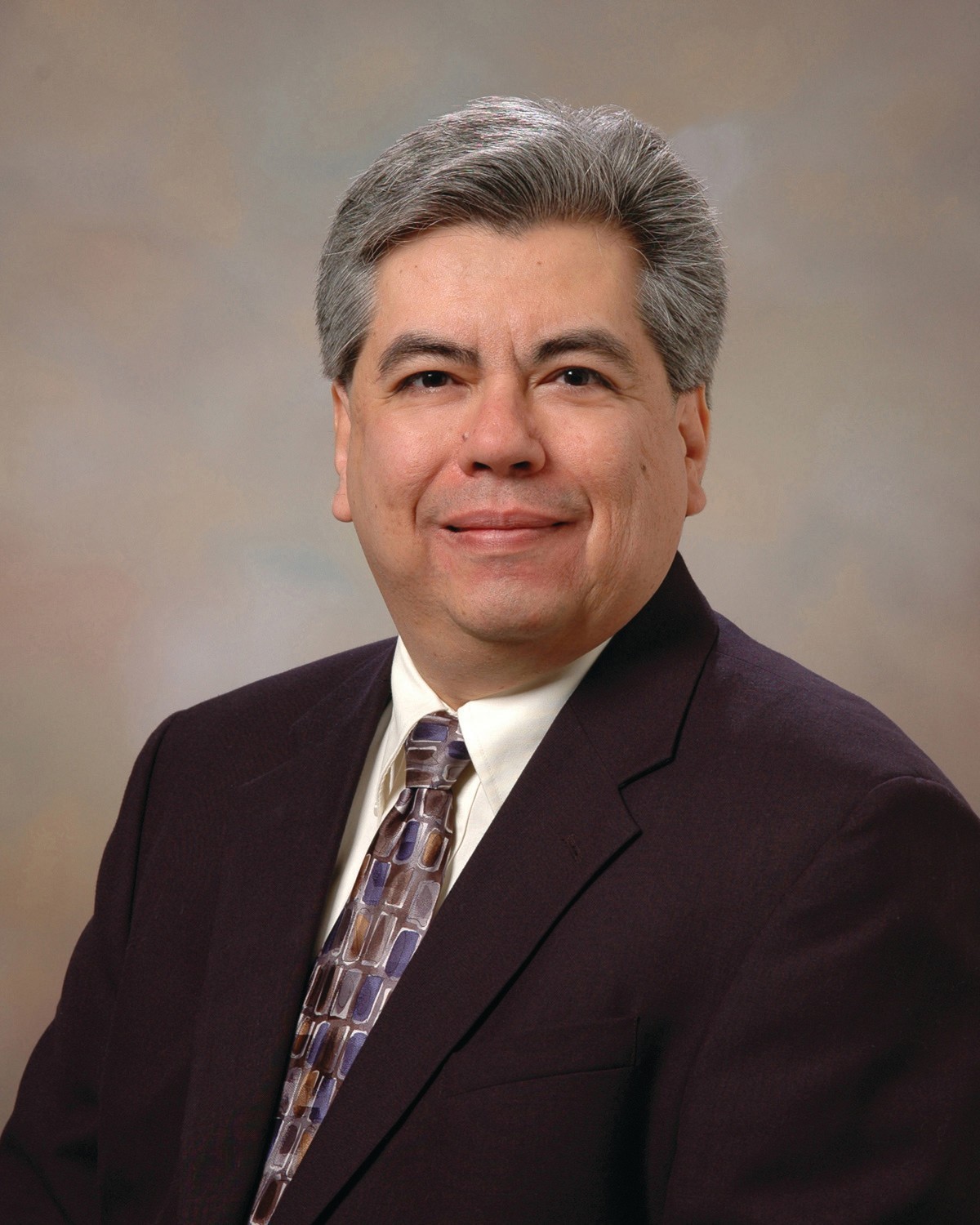Carlos Gutierrez
Materials Physics
Why physics?
It started with Aztec folktales
Carlos Gutierrez was inspired to pursue astrophysics in an unusual way: his interest in science began with the Aztec folktales that his grandmother used to tell him as a child.
These childhood stories featured astronomy and later turned into Carlos’ dream to study the stars. He was additionally inspired to pursue a career in science after visiting his aunt’s biochemistry lab.
Meet Carlos
Using physics
Fascinated by satellites and sensors
While in graduate school, Carlos was fascinated by material physics. “I just wanted to know how everything worked,” he says.
Carlos was most interested in things that dealt with observation and detection technology, like how satellites and sensors were put together. His interest prompted him to switch his specialty from astrophysics to materials physics.
Researching material properties
Now a professor at Texas State University, San Marcos, Carlos has the opportunity to work on applied projects, collaborating with engineers and with industry. Recently, he’s been working on thin film materials and nanostructures, looking for materials with properties that might be useful to devices with sensors.
One of the latest materials he’s studying is a zinc oxide-based semiconductor that’s also typically found in sunscreen. He’s working on manufacturing thin films of zinc oxide through techniques like ion beam sputtering in order to create a semiconductor that could have many uses in telecommunications, microelectromechanical systems (MEMS), and microelectronics devices.
Since this is a relatively new area of research, Carlos is excited about the possibilities that materials physics research might discover.
Carlos also enjoys collaborating with companies on sensors and devices that could have functions in areas from telecommunications to microelectronics. “I find working with these companies stimulating, and it helps me better prepare my students for potential industrial careers,” he says.
Advice for students
Challenges with diversity
Although Carlos knew he wanted to study physics, he had a hard time finding other Hispanics already in the field. In his hometown of San Antonio, Texas, his teachers couldn’t name any Hispanic physicists, and most of his friends didn’t know what physicists really did. Many of the brightest Hispanics went into engineering and medicine instead, careers that were seen as solid fields with good salaries, he says.
Since role models and encouragement were scarce, Carlos wasn’t sure if he was cut out for physics. “I wondered whether or not there was just something different in the way that people were put together that made certain nationalities better for physicists,” he says. “It really does affect a young person thinking about being a physicist if they see no one of their nationality or ethnicity who is actually a functioning physicist.”
Carlos succeeded in the field of physics nonetheless. He earned a bachelor’s degree in physics from the University of Dallas and then continued on to graduate school at Johns Hopkins University, where he earned both his master’s and doctorate degrees.
Now, Carlos says he’s a lot wiser about the situation that minorities face in physics: “I realize that a lot of it has to do with your background, in terms of the educational opportunities that you have” rather than with nationality or ethnicity, he says.
Passing it on
Carlos hasn’t forgotten his early experiences with lack of diversity in physics, so he strives to provide students with an example of a successful minority physicist. He also works to provide support to college students majoring in the sciences through his roles as faculty advisor to the Society of Mexican-American Engineers and Scientists (MAES) and member of the Society for the Advancement of Chicanos and Native Americans in Science (SACNAS).
“I do what I can to let the students know that if they really are interested in physics, that it is a viable and exciting career,” he says.
Definitions
Materials Physics
A branch of physics that deals with how the atomic or molecular structure of a material affects its physical properties. This field studies materials on a large scale and focuses on how the research done in a lab might be applied to real-world technology and situations.
Thin Film Materials
Any material that can be deposited as an extremely thin film, ranging in thickness from a few hundred nanometers to one layer of atoms. Among other things, thin films can be used for optical coatings and electronic semiconductor devices.
Nanostructures
A device, material, or particle that is smaller than 100 nanometers. To put this into perspective, a hair is about 100,000 nanometers wide!
Ion Beam Sputtering
A technique used to create very thin films. Similar to atomic billiards, an ion beam comes in and knocks off atoms from the target material. The atoms that are knocked off are deposited on a nearby wafer producing the desired thin film.
Microelectromechanical Systems (MEMS)
MEMS are everywhere, though you might not know it: the device that deploys your airbag in a car accident is a MEMS device. They’re also found in other places in cars and in medical devices. These devices are produced on silicon wafers through etching or layering, which makes it relatively cheap and easy to manufacture them in large quantities. When MEMS are coupled with microelectronic circuits, it’s possible to have a system-on-a-chip: sensors collect information about the environment around them and trigger a physical response through the MEMS.
